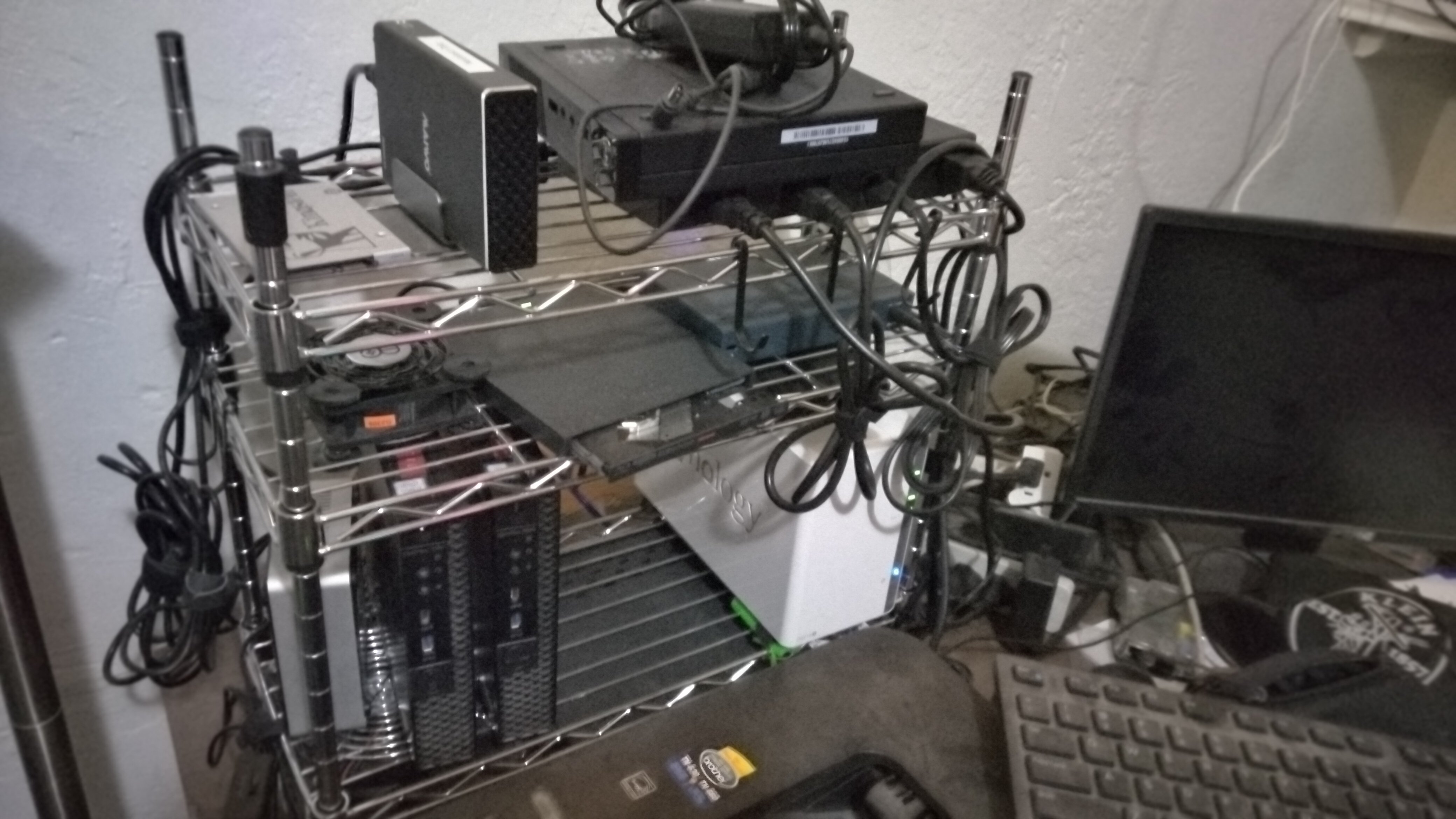Uggo = uptime
Cenzorrll

- Old Synology NAS for storage
- Optiplex 7060 running jellyfin, paperless, *arr stack, handbrake, ripper, maybe some other containers.
- NUC5 running nextcloud (nextcloudpi) baremetal and an audiobiokshelf container
I would think that the power led would be on if there's power going through the motherboard.
Are you referring to the power led or the disk usage led? I think on my nuc the only other led is the disk usage one, which looks like a soda can. The power led is always on, but doesn't indicate standby or operating as far as I've seen.
It's likely there's another boot device that's taking priority over USB, if USB is even enabled in the bios. I've had a few computers that try to pxe boot after internal drives, so it never went to usb until I futzed with the boot order to remove pxe. It's likely not that you didn't have an SSD in it, but that USB drives aren't high enough on the boot list, or not at all. You could try finding what the boot selection key press is on boot, then blindly picking first, second, third option etc. to see if anything gets a hit (frantically press boot key during start up then hit enter after a few seconds, then reset and do it again if nothing happens after about 30 seconds, but hit down, then enter.)
I believe it would have been winlink or amprnet. I think winlink really only does low bandwidth things like email and weather bulletins. Not sure about amprnet
There's also that pesky low r/w bitrate.
I don't keep a Swiss army knife set of distros anymore. I put tumbleweed on a USB. It's rolling so I update it when I plug it in, then do what I need to do.
I used to have a USB with Ubuntu LTS and whatever the newest Ubuntu was. Then another would get something else that I needed/wanted. I always ended up wiping the drive and adding the newest release every single time. I was always out of date by the time I needed one of them for boot repair or something. This was also a time when persistence... Wasn't very persistent. With tumbleweed I can install whatever I need and it's there next time. I'm sure you can do the same with any other rolling release, but tumbleweed is in my opinion on par stability-wise with incremental distros. It's my first grab whenever I need to check a PC. If I need another distro or boot USB, I can make it from this one with a second USB. I suppose the only thing I can't do is make a bootable USB if the computer I'm on can't access the Internet
As far as I know, it isn't illegal to attain or have media for personal use. It is illegal to circumvent DRM and to distribute the media.
So, for example, it isn't illegal to record a stream. But the hoops you'd have to jump through in order to do so would end up circumventing DRM or with incredibly poor quality.
I used both tumbleweed and leap for a bit and they really are good. I'm actually using tumbleweed on a home server right now and it's been a champ. But...
-
My biggest gripe is opensuse seems to use different package names than any of the other distros for basic packages. I had to install a package that used capitals in the package name, and coming from mostly debian based distros, that made me rationally angry when trying to find the package I needed. I think it was network-manager or something that's usually installed by default and I wanted something familiar.
-
Online directions for setting something up usually has deb and/or fedora rpm directions, which is usually just some difference in package names and the equivalent install command, searching the base package will let you figure it out. I had very few issues following debian/Ubuntu directions and translating them for fedora. Opensuse is always non-existent so you always need to translate those directions for opensuse, which is usually like doing it for fedora until you run into point (1).
You'd probably get better conversations at selfhosted I know some folks there run *bsd network appliances. NASs, firewalls, etc.
You don't need to pop it out to DD the SD card, you can do it while it's running. I like to pipe DD through gzip to get a compressed image as the output so I'm not sitting on 16gb file for 3gb worth of files.
This one gave me the confidence to post my setup, I salute your bravery (°_°)7.
The best of luck with your future insurance claim.